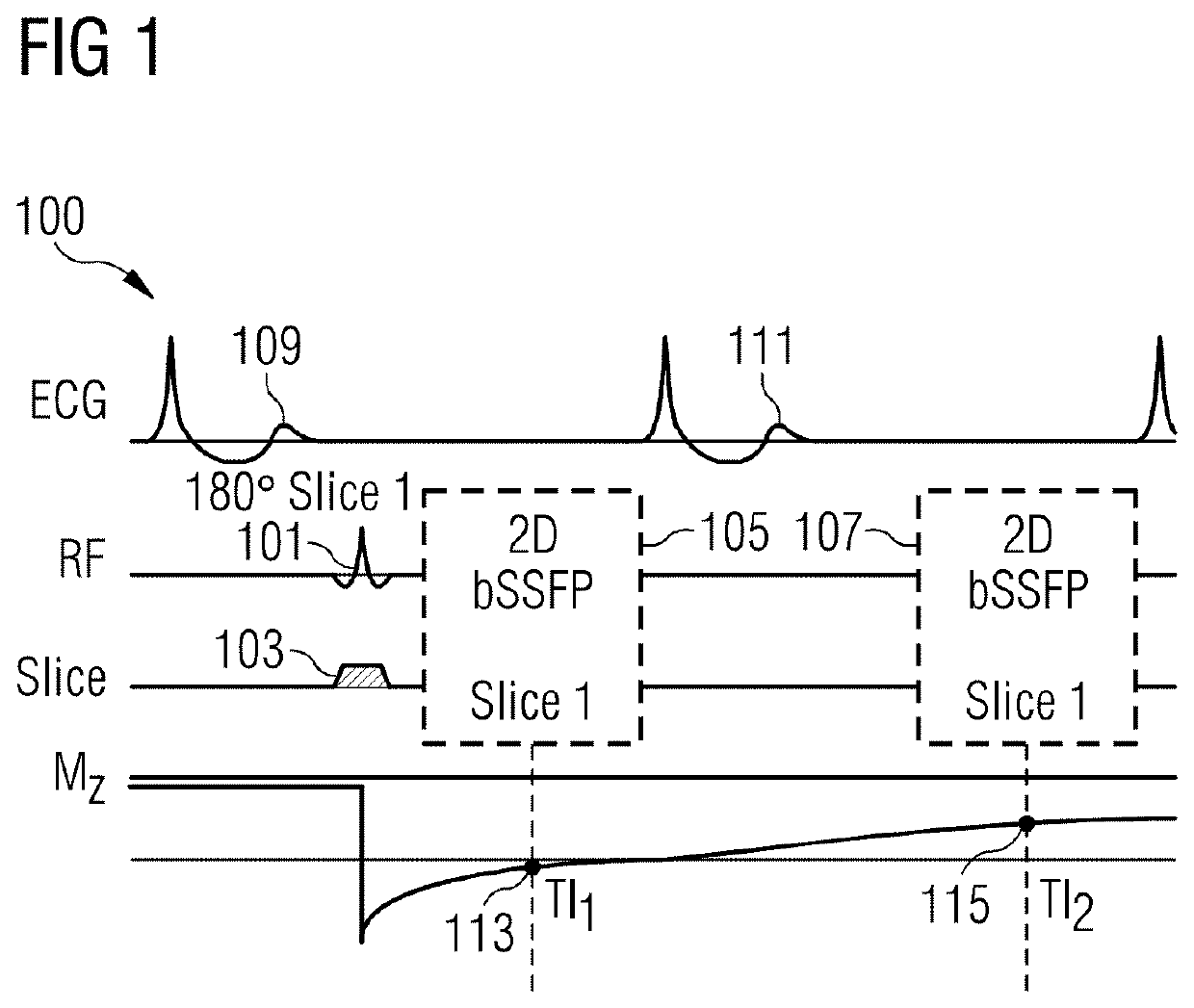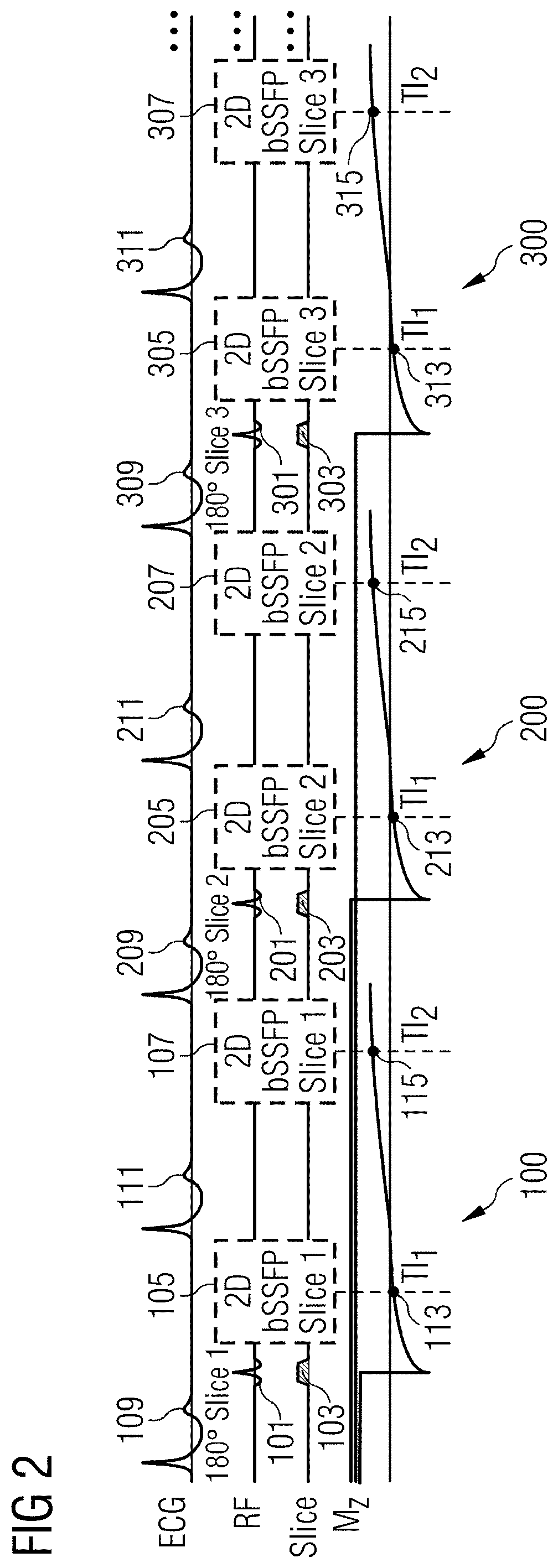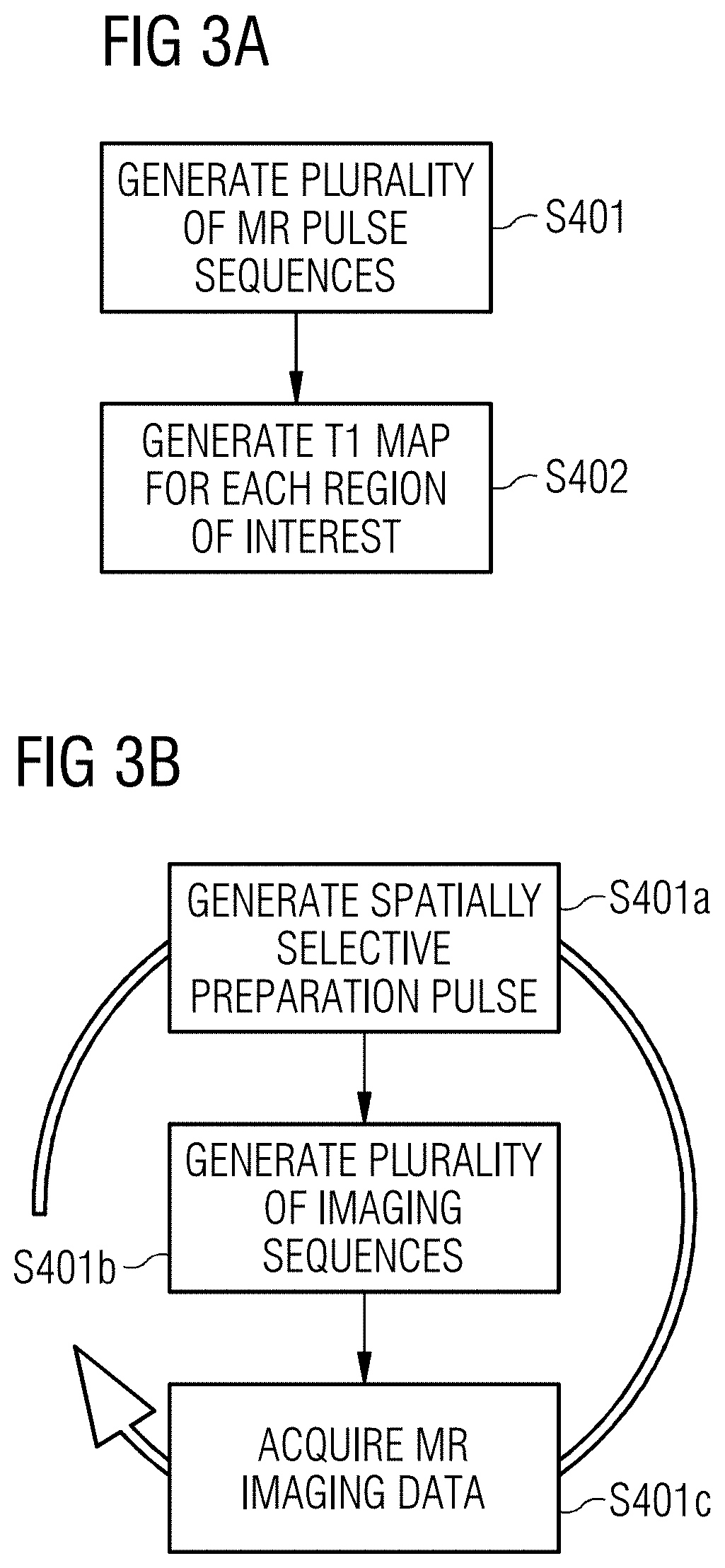Method of performing magnetic resonance imaging and a magnetic resonance apparatus
a magnetic resonance imaging and magnetic resonance technology, applied in the direction of nmr measurement, instruments, magnetic measurement, etc., can solve the problems of only generating t1 maps, and affecting the accuracy of mr imaging
- Summary
- Abstract
- Description
- Claims
- Application Information
AI Technical Summary
Benefits of technology
Problems solved by technology
Method used
Image
Examples
Embodiment Construction
[0088]Referring to FIG. 1, there is shown a MRI pulse sequence 100 for generating a T1 map in accordance with aspects of the present invention. The sequence 100 is used for myocardial T1 mapping and is ECG gated / triggered. It will be appreciated that ECG gating is not required in all embodiments of the invention.
[0089]The sequence starts by generating a spatially selective preparation pulse 101, 103 for exciting a region of interest of the subject. The generation of the spatially selective preparation pulse 101, 103 is triggered by the ECG pulse 109. The spatially selective preparation pulse comprises an excitation pulse 101 which is an inversion pulse 101 in this example implementation and a magnetic field gradient 103 which is generated along a first spatial axis. In this example implementation, the magnetic field gradient 103 is generated along the slice select axis, and is thus a slice selective magnetic field gradient 103.
[0090]Following the generation of the spatially selectiv...
PUM
 Login to View More
Login to View More Abstract
Description
Claims
Application Information
 Login to View More
Login to View More - R&D
- Intellectual Property
- Life Sciences
- Materials
- Tech Scout
- Unparalleled Data Quality
- Higher Quality Content
- 60% Fewer Hallucinations
Browse by: Latest US Patents, China's latest patents, Technical Efficacy Thesaurus, Application Domain, Technology Topic, Popular Technical Reports.
© 2025 PatSnap. All rights reserved.Legal|Privacy policy|Modern Slavery Act Transparency Statement|Sitemap|About US| Contact US: help@patsnap.com



